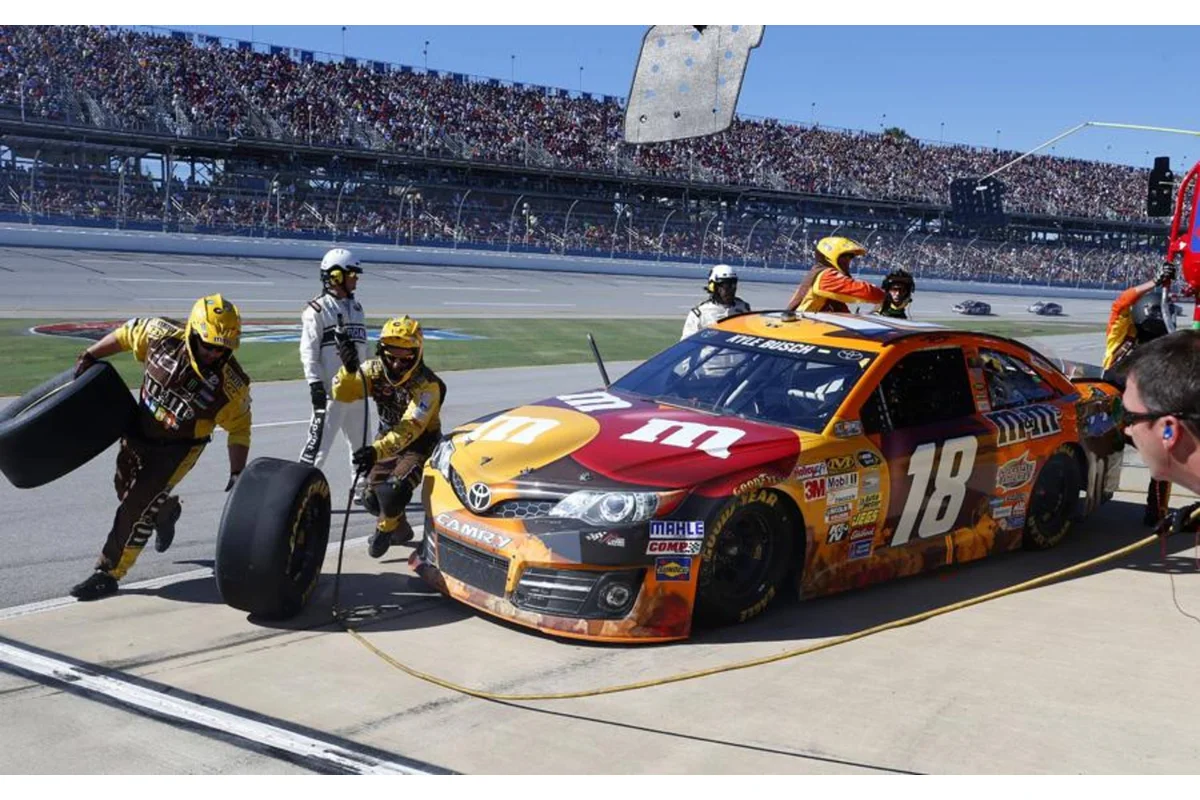The launch of NASCAR’s Next Gen car in 2022 has radically changed NASCAR Next Gen pit stops, bringing significant updates to safety and efficiency across the sport. Since its introduction, drivers, pit crews, and engineers have adjusted to new routines on pit road, contending with both the benefits and complications this model presents.
While the car has received acclaim for making races safer, its performance on short tracks is still being refined. However, improvements in pit stop procedures have stood out. Adam Stevens, crew chief for Christopher Bell, recently revisited his predictions about how these changes would impact pit crews after four seasons with the new car. Stevens shared his firsthand insights on adapting to these advancements and how they continue to shape race days.
Revisiting Predictions and New Strategies
Stevens initially projected that the tempo of pit stops would shift dramatically with the Next Gen era. Before these changes, a four-tire pit stop typically took between 12 and 13 seconds, with only occasional 11-second performances. As a result, most drivers remained stationary in the pit box while the quickest competitors finished and returned to the track, creating a staggered and less congested pit road environment.
With the arrival of the Next Gen car, Stevens envisioned pit stops becoming much faster, leading to situations where cars would be leaving their stalls as others were just entering, potentially increasing traffic and the risk of collisions.

“I think that didn’t end up being as big of a deal specific to that because it’s just a matter of timing, right? So, we were used to a certain cadence and a certain amount of time. And now that time has shortened.”
— Adam Stevens, Crew Chief
Stevens went on to explain that pit road simply found a new equilibrium following these modifications. He commented,
“So, instead of being, you might have time for 25 or 30 cars to pass before you’re ready to leave your stall at a certain pit road speed, now it might be 15 cars to pass. So, it’s definitely been an adjustment, and it has increased that awareness and that propensity for that to happen, but it hasn’t been a huge deal.”
— Adam Stevens, Crew Chief
Advancements in Pit Stop Technology
One of the most noteworthy changes influencing pit crew speed involves advances in lug-nut technology. Decades ago, pit crews relied on T-wrenches for wheel removal, a slow and labor-intensive method. The advent of pneumatic impact guns and floor jacks in the 1950s greatly improved efficiency compared to the earlier bumper jacks.
Pit crew members once balanced lug nuts in their mouths to install them individually, causing pit stops to consume valuable seconds. A breakthrough came during a 1970 pit crew competition at Rockingham, where a team glued lug nuts to wheels, a strategy that became standard for years after proving its worth in live competition.
In the 1980s, nitrogen-powered tools revolutionized pit lanes. By the 1990s, specialized engineers became involved, constantly pushing the limits of pit gun technology, resulting in an arms race for the fastest stop until 2017, when every pit gun in the garage was operating at full potential.
Unified Equipment and Streamlined Stops
NASCAR responded to escalating competition by introducing standardized pit guns in 2018 to create a level playing field. The game changed again in 2022 with the Next Gen car, which adopted a single-lug wheel design. Here, the single lug nut is built into the gun and secured when the car arrives in the pit, making the legendary glued-on-nut method obsolete and further accelerating stops.
Thanks to these adjustments, modern top-tier pit stops are performed in roughly nine to eleven seconds. While teams in the Xfinity Series continue using the five-lug method as a nod to NASCAR tradition, the premier series has embraced the streamlined approach, reflecting both progress and an ongoing connection to the sport’s roots.
Ongoing Impact and Future Adjustments
The transformation of NASCAR Next Gen pit stops has led to brisker action on pit road and changed how crews approach each race. Teams have become more vigilant about timing and spatial awareness, responding to the condensed interval and new choreography that the Next Gen format demands. Key figures such as Adam Stevens, Christopher Bell, and lead engineers have all played roles in shaping this adaptation, while historic moments like the pit crew competition at Rockingham provide context for how far the sport has come.
As the top division continues its push for efficiency, both drivers and crews must persistently evolve, ensuring that safety, speed, and coordination remain at the forefront of every NASCAR Next Gen pit stop.
